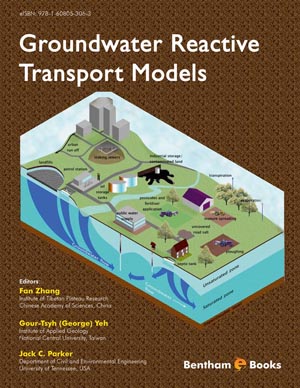Abstract
The Slovakian clinoptilolite-rich tuff was chosen as the interface carrier (interface consisting mostly from polymeric substances) based on its huge abundance in the country, accessibility and feasibility, cost effectiveness and sufficiently large surface area, rigidity and surface functionality. Simple pretreatment of zeolite samples to homoionic forms with ion exchange was done at the laboratory to enhance the ion exchange capacity of the raw zeolite. The octadecylammonium (ODA) cationic surfactant loaded and surface carbonized clinoptilolite-rich tuff as well as powdered zeolite-gel beads (alginate pelletized clinoptilolite-rich tuff) were prepared furthermore, to prove the adsorption performance of such modifications towards various, mostly anionic and organic pollutants, i.e., chromate, arsenate, sulphate, nitrate, chloride, iodide, bromide, fluoride, azodyes-acid red and indigotine, cefazoline and phenol. To examine the zeolite adsorbents for their performance, batch and column (packed bed) laboratory setup was used. Complementary analytical methods, e.g., FTIR, Raman, TG, DTA, S(BET), SEM, HR TEM, UV-VIS diffuse reflectance, SIMS, NMR, XPS, SAXS, Mössbauer spectroscopy were applied for the characterization of the prepared ODA hydrophobized, alginate pelletized and carbonized clinoptilolite-rich tuffs. Removal performance of zeolite adsorbents was compared with other on the market accessible adsorption materials, like active coke of Slovakian trade mark HYS-N and of German provenience silcarbon, industrial ashes chezacarb (amorphous carbon) from Chemopetrol Litvínov (Czech Republic), commercial Happy End products from Great Britain (mostly natural resources derived and mixed products denoted as SK1, SK2, DN2 and CB18), Nanofer 25S from Czech Company Nanoiron, Ltd. and some others.
Keywords: Alginate pelletized clinoptilolite-rich tuff, aluminium removal, analytical methods, azodyes, batch or column experiments, cefazoline, FTIR, Functionally graded zeolitic adsorbents, HR TEM, inorganic anions, ion exchange, Mössbauer spectroscopy, NMR, octadecylammonium (ODA) surfactant, other commercial adsorbents, phenol, pyrolysis chamber for surface carbonization, S(BET), SEM, SIMS, TG, UV-VIS, XPS.












